#holycrown
Photo
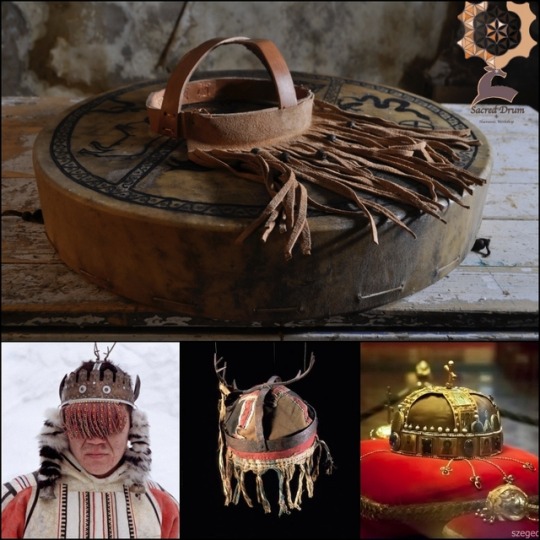
All over the world in many traditions shamans wear unique headdresses. The crown on the shaman's head symbolises the quality of consciousness, while it is also a tool for inducting powers from heavenly worlds. Crowns were initiation tools which helped the sacred kings of the Earth connecting to high-order powers. The crown can be installed with powerful symbols like feathers, antlers and stones which give a "program" for these tools. For instance: What is behind the symbol of feather? It is connected to the ability of flying, which can be a physical flight, dreamlike flight or the soaring of your spirit. I have created this basic shamanic headdress. The task of painting and decoration - programming - of this headgear is waiting for the owner. Programming the crown must be a precise and deliberate work. www.sacreddrum.net
#shamanic#shamanism#shamanictool#shaman#shamandrum#sacreddrum#tribal#ethnic#traditional#ancestors#crown#holycrown#spirit#spiritual#meditation#meditation tool#shaman tool#wiccan#pagan#religious#religion#shaman headdress#initiation#handcrafted
14 notes
·
View notes
Photo
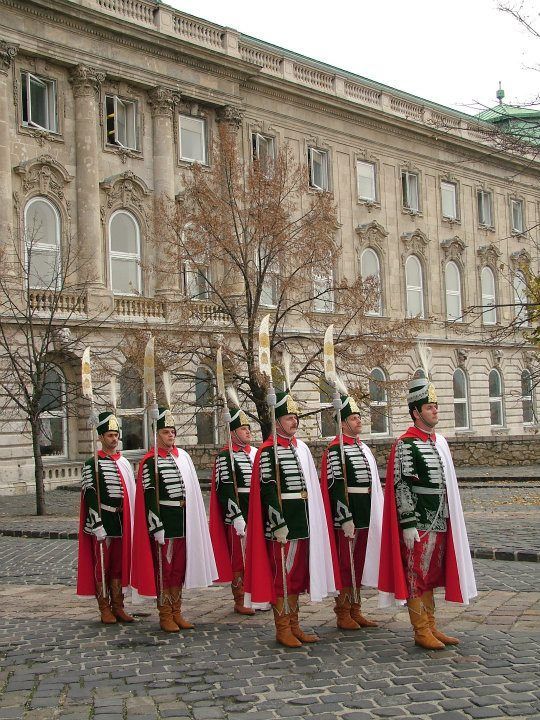
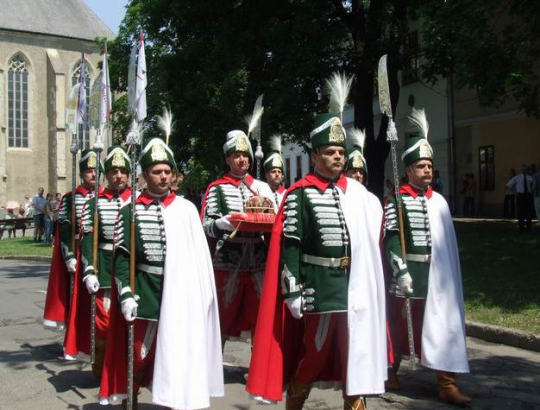
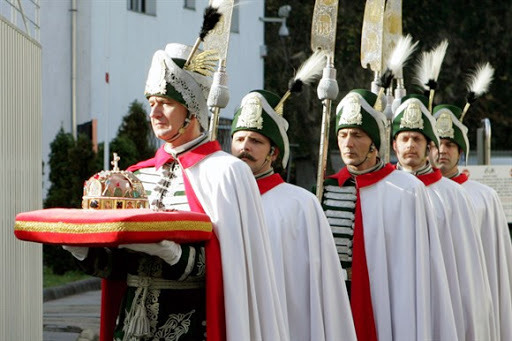


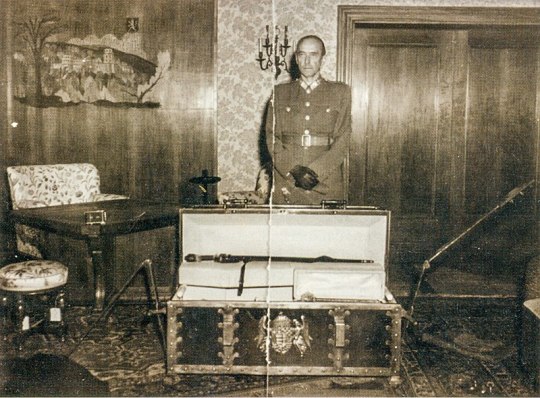
Save the tranquility of your soul even in the misfortune.”, the history of the Royal Crown Guards of Hungary The institute of crown guards has a long, several centuries-old history. During the reign of Mathias Hunyadi, regulations for the crown guard were established. In 1500, it was declared that two noblemen should be named as crown guards. They were to be state dignitaries of second in rank in the nation. Their selection would be submitted by the king to the parliament, and after acceptance they would take an oath before both houses of parliament. Their names and nomination became law, and they were obliged that one of them should be always in the vicinity of the crown. This practice remained valid until 1945. The two guards were dignitaries of the state, not to be confused with the effective guards who were regular armed soldiers. From 1608 until 1784, the crown was guarded in Pozsony, and then taken to Vienna on the order of Joseph II. In 1790, on his dead bed, the Habsburg king withdrew his order and the crown returned to Buda. During the duration of the monarchy, in 1872, the Crown Guard was incorporated into the Hungarian Army (Honvédség), with 2 officers and 45 soldiers. Some of the conditions for acceptance in the crown guard was pleasant physical appearance, a height of at least 178 cm and bachelor status. They received a reasonable salary. The crown guard uniform followed Hungarian traditions dating back to the 16th century. In 1909 the guard’s uniform changed somewhat. It was the Royal Crown Guards combat, who spirited out of Hungary the Holy Crown, to protect it from the Germans and the Soviets. On May 2, 1945, the Holy Crown and other jewels were handed over by a Hungarian Army Colonel to a U.S. Army Colonel near Egglesberg, Austria. The Crown had been packed in a large black satchel. It was initially sheltered in Wiesbaden, in the American Zone, but was later transferred to the United States Gold Reserve at Ft. Knox, Kentucky. Before that Colonel Erno Pajtas and several of his fellow guards had brought the crown and its accompanying regalia—a sword, a scepter and an orb—from a monastery, later a bunker at Köszeg, in western Hungary near the border, to Zellhof, situated near Mattsee and about 20 miles from Salzburg. There they digged the empty chest, and the regalias separately, later ones in a halfcutted gasoline drum into the earth in Zellhof am Mattsee, Original members of the Royal Crown Guards passed by now, the Holy Crown of Hungary is in the Hungarian Parliament guarded by a new combat, the 32nd Budapest Guard and Ceremonial Regiment, but the memory and heroic deeds of the ones during WWII did not faded away, the Royal Crown Guards Association keeps their memory,
7 notes
·
View notes
Photo

Art trade with @lx_eomma ♡ theme was each other's home countries (hers is Hungary) with the idol of each others choosing with one random prompt word. My word was serpent lol. But this is taehyung in the holy crown of the first king of Hungary above the national bird which is a Turul (a mythical bird that's a combo of a hawk and falcon - very fierce). #kimtaehyung #tae #taehyung #taehyungfanart #bts #bangtan #bangtansonyeondan #btsarmy #btsfanart #bangtanfanart #kpopfanart #kpop #sharpie #v #btsV #hungary #turul #holycrown #serpent #coloredpencil #portraitdrawing #portrait
#bangtanfanart#bts#portrait#serpent#coloredpencil#btsarmy#v#hungary#btsv#kpop#portraitdrawing#btsfanart#kpopfanart#turul#holycrown#kimtaehyung#taehyungfanart#bangtansonyeondan#tae#bangtan#taehyung#sharpie
2 notes
·
View notes
Video
@planetaryaotp @malpha565 #HolyCrown #OuterSpace #OS #AOTP #Philadelphia #Pistolvania https://www.instagram.com/p/B8wjQUxADbY/?igshid=d62a8fxbs40h
0 notes
Photo
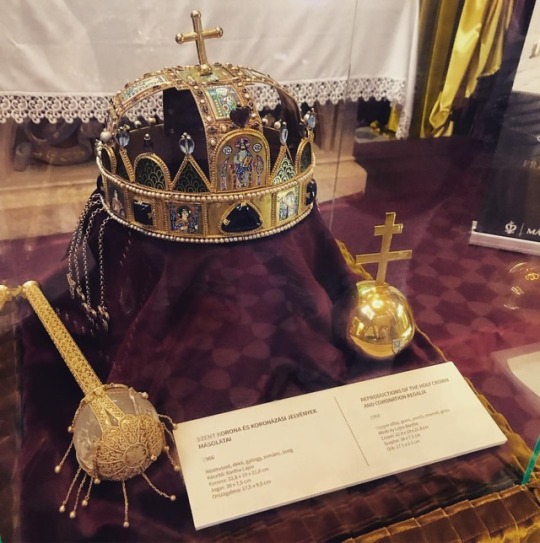
Replica of the holy crown and coronation regalia of Hungary (1966) at the Matthias Church #monvatoojourney #hugariancrown #holycrown #crown #hungry #regalia #historydiary #history (at Matthias Church)
0 notes
Photo

LADY ALEXANDRA + ANASTASYA, PRINCESA DE RUMANIA + DEXTER, DUQUE DE ESTADOS UNIDOS + OLIMPIA, PRINCESA DE REINO UNIDO + DARCEY, PRINCESA DE FRANCIA + LEONARDO, DUQUE DE BRASIL ( @holycrowns )
0 notes
Photo

#magicjuantattoo #crosstattoo #purpleribbon #holycrown just a lil color work
0 notes
Text
Holy Crown of Hungary
Though it is now known as the crown of Saint Stephen, the crown of the Hungarian monarchy has had a long life as a secular object. Its origins are hotly contested, but it is popularly believed in Hungary that it was in fact worn and commissioned by King Stephen I, crowned the first king of Hungary on 25 Dec 1000 or 1 Jan 1001. Tying the secular together with the sacred, the story goes on to tell how King Stephen held up the crown during the coronation, to offer it to the Virgin Mary, and seal a divine contract between her and the Hungarian monarchy. However, tradition and science don’t always match up.
Though it is highly possible that parts of the crown did in fact belong to the crown worn by King Stephen, it is now generally believed that it dates between the late 11th to the late 12th century in its entirety. Done in a style popular in the Byzantine Empire at the time, the crown is a gold circlet inset with 19 Byzantine produced enamel plaques, illustrating Christ and some of the saints (de Bàràny-Oberschall 121). Large jewels and pearls are intermingled with these plaques, and dangling chains house garnets at their tip, clustered in groups of three. At the top of the arched central piece of the crown is a simple gold cross, bent to one side, knocked crooked in the 17th century when the crown was damaged, possibly by the top of the iron chest used to house the crown being hastily closed without the checking that it was fully inside. The cross has since been left in this crooked position, and is now always depicted as such.
The original cross is believed to have been a double armed one, containing pieces of the True Cross. In her book, Die Ungarischen Krönungsingien, Eva Kovács states that:
“Szabolcs Vajay, called to my attention a strange incident in the crown’s history which had completely escaped everybody’s attention. Before Queen Isabella handed over the regalia to Ferdinand in 1551, she broke the cross off the crown’s peak for her son, John Sigismund. According to a contemporary Polish chronicler, John Sigismund wore this cross on his chest till the end of his life, ‘...because he who possess this cross will again come into possession of the missing parts which, subjected to the power of the cross, had belonged to it’” (Kovács 61).
This would seem to indicate that the “holy” aspect of the crown came from the original cross, making it in fact a reliquary in itself. The removal of the cross reduced it to secular status, a symbol of a noble monarchy with saintly origins. After John Sigismund’s death at a young age, the cross passed into the hands of other nobility, and likely still exists to this day, though its whereabouts are unknown.
The crown continued to be used by the Hungarian monarchy up until its dissolution in the aftermath of World War I. It continues to be a symbol of Hungary, and has proudly been illustrated on official documents, stamps, and in portraiture. Along with other surviving elements of coronation ware, including the mantle, sword, scepter, and orb, the crown is an enduring legacy of a once great kingdom. Perhaps one day the monarchy will be restored, and the crown will once more grace the heads of kings.
0 notes
Photo
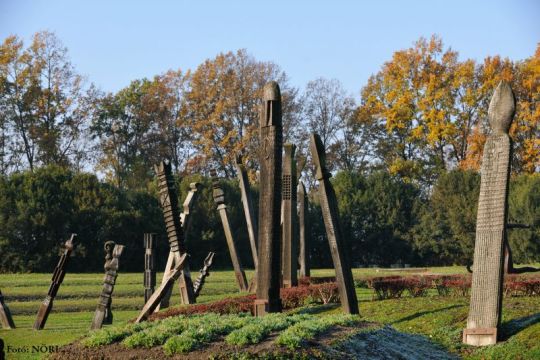
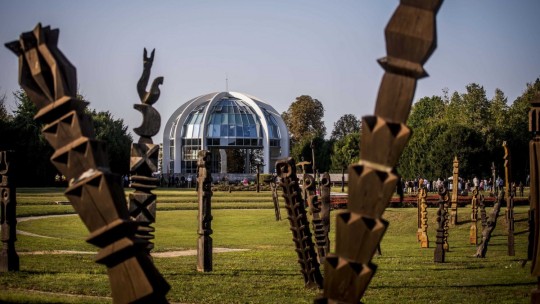
The #National Monument of #mohacs The Memorial is devoted to the fatal battle of the Hungarians against the Turks in 1526. The lost battle – being a turning point for whole Central Europe – determined the 150 year-long Turkish rule in central Hungary. The park is home for the grave of 1700 soldiers and of the 19 years old King Louis II. The Memorial has an accompanied visitors’ centre with an exhibition including interactive features. The central dome is a reminder of the #HolyCrown of Hungary.
4 notes
·
View notes
Photo
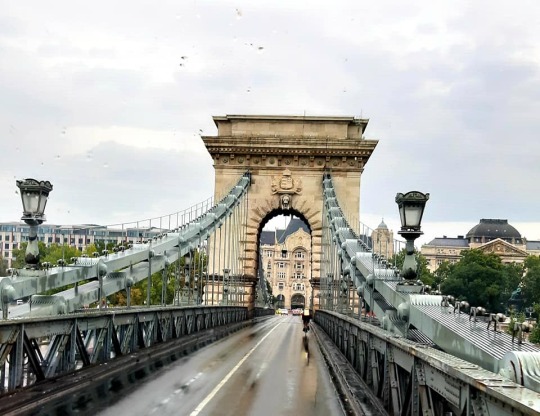
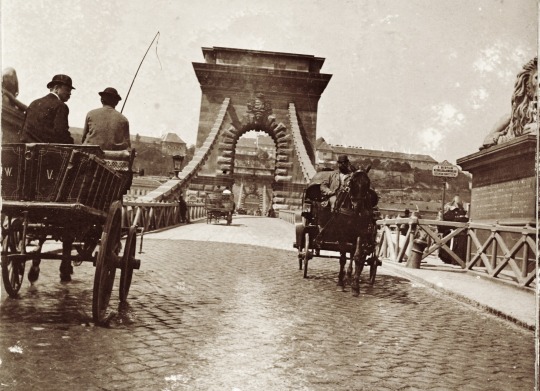
Chainbridge is the most known bridge in Budapest and Hungary. Count István Széchenyi’s dream and the English William Tierney Clark’s plan came to life, when one of the largest and most modern bridges in the world at the time opened in 1849. The bridge was rebuilt between 1913-15, and also rebuilt after the Second World War, in which retreating German troops blew it up. The square at the Buda's end of the bridge is named after another Clark, but this time we are speaking about a Scottsman, Adam Clark, whose name was iccidently the same, as the bridge's designer. Young Adam Clark came from #Edinburgh as a young engineer to build his first big creation. The structure’s official name is #Széchenyi Chain Bridge, but only from 1895. Seems to be funny, but until 1915 the bridge did not even have a name; it was simply known as the lower case “chain bridge.” Just as we call today! One of the popular disbelieves, even amongst Hungarian, it is a copy of a bridge in England. Marlowe. But not at all! The designer, William Tierney Clark planned several bridges in England, one of which has survived more or less unchanged, the bridge over the Thames in Marlowe. Since they were designed by the same engineer, there are several structural and aesthetic similarities between the two bridges, but they are far from being each other's copy. And do the famous lions have tongues or not? Yes, they did! The legend that during the opening ceremony a boy shouted “look, the lions have no tongues!”, resulting in the sculptor’s, Marschalkó’s, suicide, is false. In fact, it is a borrowing of an Austrian story, according to which during the unveiling of an equestrian statue in Austria someone exclaimed that there was no stirrup on the saddle. But it is true, that during revolution of 1848!49 against Habsburg rule in Hungary, Adam Clark saved the bridge from explosion, filling up the chain's chambers by water personally. It is also true, that the first passanger of the bridge was the #Holycrown of Hungary, during the revolution above it was escaped from Buda Castle through tha half ready bridge. Interesting fact, that Chainbridge was privately owned until 1870; its shares were listed on the Vienna Stock Exchange, meaning virtually anyone could have bought it. True, the price would have been high. When the state bought the bridge, it paid nearly one and a half times as much as the construction of Margaret Bridge had cost.
8 notes
·
View notes